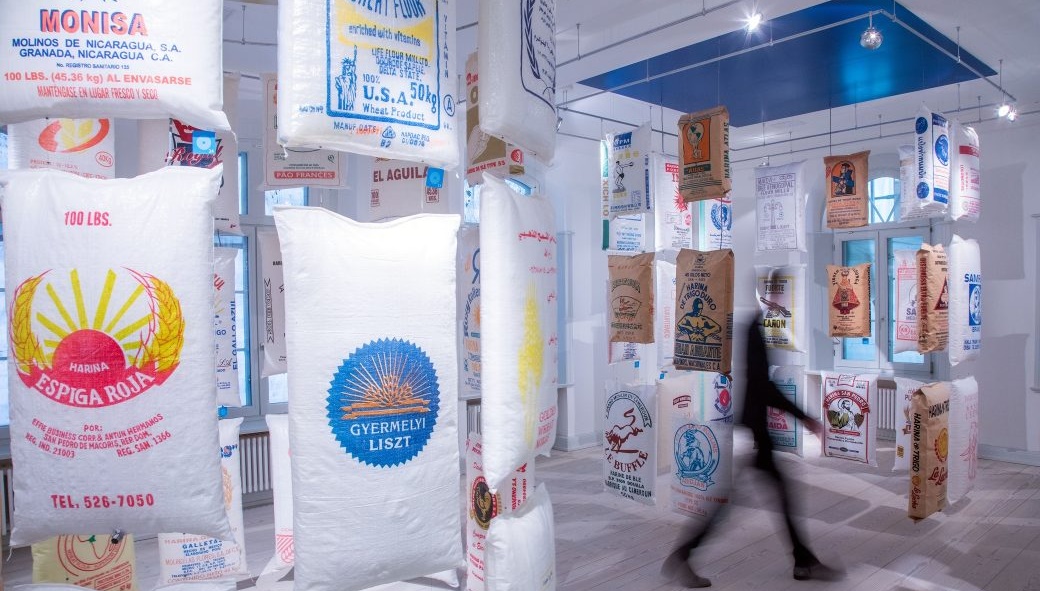Wittenburg has the largest collection of flour sacks in the world
In the Mecklenburg town of Wittenburg there is probably the most bizarre permanent exhibition in Germany:

Because this is where the Museum MehlWelten is located, which is completely dedicated to the staple food. Since opening in 2008, an amazing number of exhibits have come together. Some of them even have special stories.
Many places around the world also define themselves through their exhibition halls. Paris has the Louvre, Madrid its Prado, New York the Moma. And little Wittenburg in Mecklenburg-West Pomerania? That’s what the so-called “Sackothek” has. It is the heart of what is probably the most bizarre collection in Germany, the Flour Museum in Wittenburg. As the name suggests, a wide variety of exhibits related to the staple food are on display here in the Flour Worlds. And in the “Sackothek” these are sacks of flour.
According to the official website of the museum, which also calls itself the “flour art museum”, there are now more than 3,600 pieces from over 140 countries. There are sacks from every continent, including exotic locations such as the island of St. Helena and Mongolia. They can all be admired in the “Sackothek”, which can be imagined as a huge library for flour sacks. Of course, these are not all hanging in display cases or on the walls, but are kept in notebooks arranged according to English country names.
The idea came about by chance
In the Flour Museum, which opened in 2008, you can not only marvel at the countless, ahem, old sacks, but also at other exhibits on the subject of flour. For example, the replica of an Egyptian statue from 2450 BC showing a woman grinding flour. In another room you learn all about the symbols on the flour sacks. For example, why lions and locomotives are popular motifs, and why a camel on a Moroccan sack of flour and a dragon on its Chinese counterpart have the same meaning.
It is a coincidence that the Flour Museum exists at all today. And the commitment of a single man. According to this, in 1998 the industrial magnate Volkmar Wywiol found a washed-up flour sack on the beach in Dubai. Among other things, Wywiol is the owner of the Mühlenchemie company, which produces additives for flour. In the years that followed, the idea for the Flour Worlds grew within him. It was mainly customers of his Mühlenchemie who subsequently sent the exhibition center the numerous exhibits from all over the world.
Anyone can submit new exhibits
But private individuals also contribute to the unique collection in the Flour Museum. Among other things, two flour sacks from the time of the Berlin Airlift have been preserved. In 2008, the house also received a donation from a woman whose mother, a miller, had traded flour for coffee beans during the war. There is space for these and other pieces steeped in history in the “Historical Sacks” room. And because the exhibition is set to grow in the future, the museum naturally also accepts further donations.
Anyone wishing to send in a new bag can do so along with a completed registration sheet. This will then be exhibited in the “Sackothek” in the Flour Museum. The website continues: “As a thank you, we will send you a Sack Collection Certificate with a personal registration number”. The fact that Wywiol is serious about flour is also shown by a “Flour Sack Award” that has already been presented several times. The most beautiful motif on one of the good pieces will be awarded. In 2018, a “competitor” from the Caribbean island of Guadeloupe won.
If you are now interested in visiting the Flour Museum in Wittenburg: it is open every Sunday of the month from 12 p.m. to 5 p.m. From May to October, you can also visit the exhibition every first and third Saturday of the month at the same time. Entry is free. Special tours outside the opening times cost five euros per person, but are only carried out for a value of 100 euros or more. But enough information, you’ll have to let that sink in for now, be careful.

